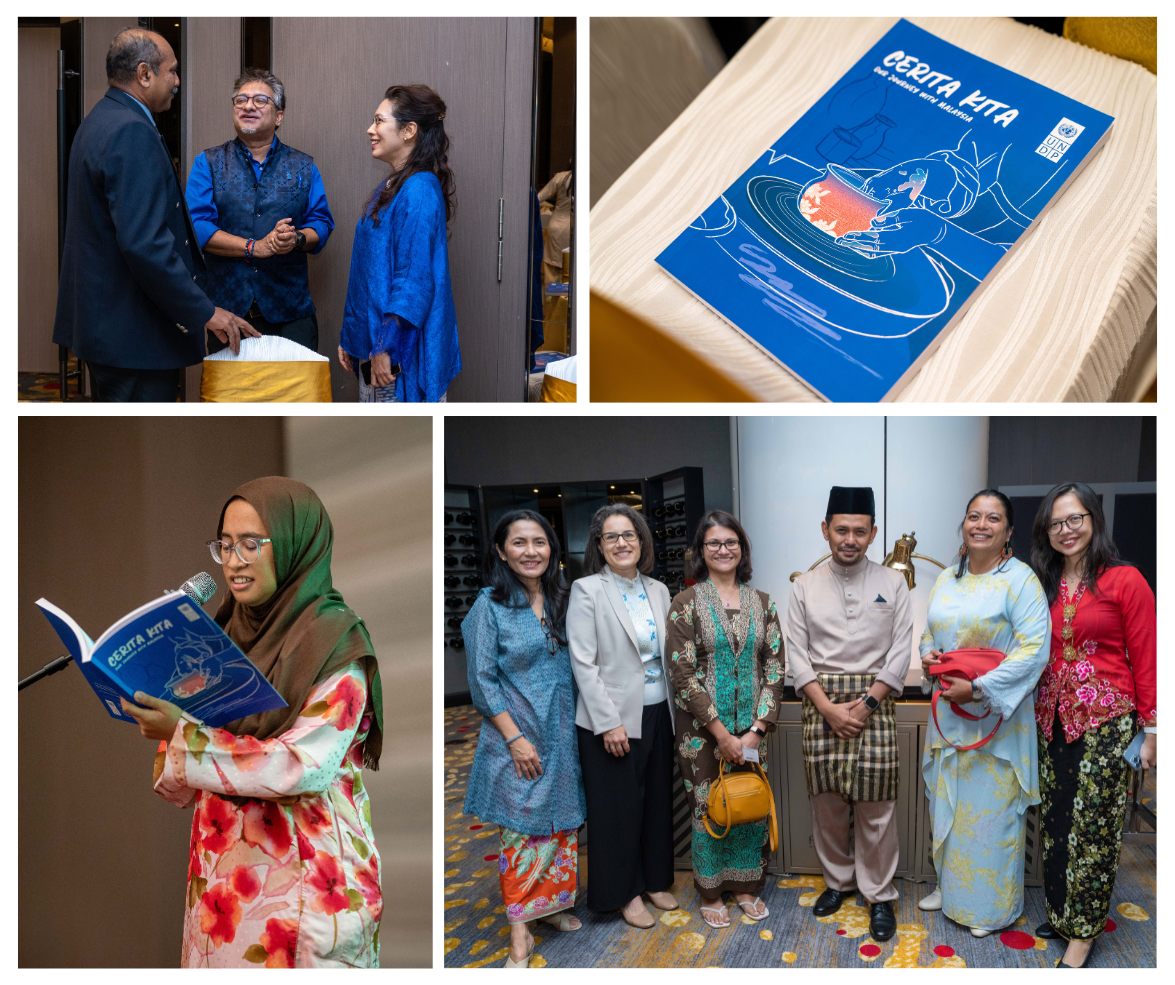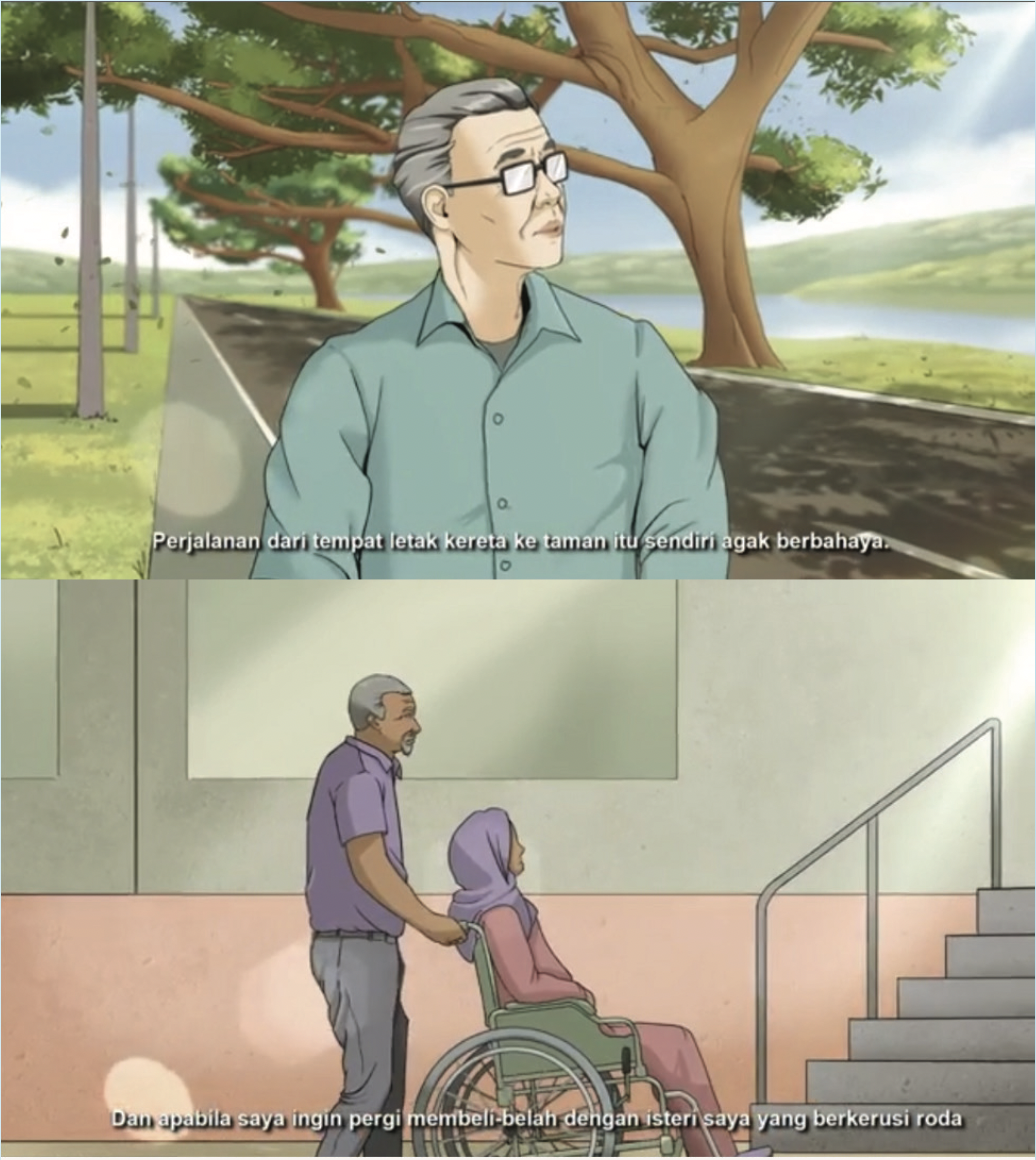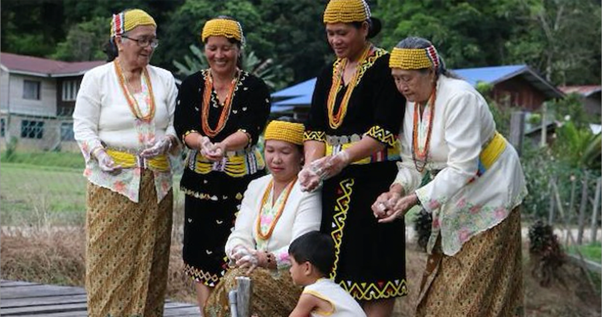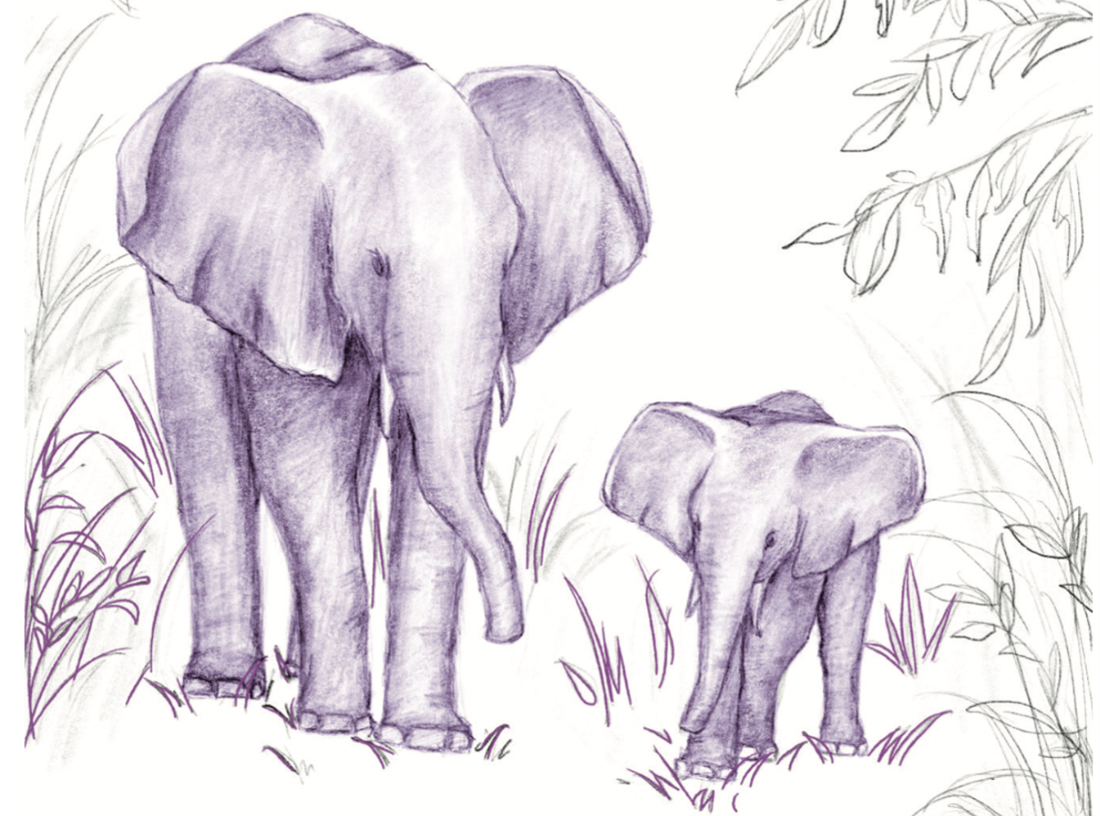"Cerita Kita": our stories of sustainable development in Malaysia
May 24, 2023
In conjunction with Hari Raya Aidilfitri this year, UNDP Malaysia, Singapore, and Brunei Darussalam unveiled a composition close to our hearts, titled 'Cerita Kita' (meaning 'Our Stories') – a captivating compendium filled with heartfelt reflections, profound analyses, and important observations, chronicling the stories and impact of sustainable development work in Malaysia that UNDP has helped to realize.

The Cerita Kita launch saw key stakeholders attend in festive Hari Raya garb, and were presented with sectional readings of the narrative report.
The form of this report is part commentary, part personalized stories and interviews. This is our third publication in two years that ‘storifies’ deep issues of policy, development, inclusivity, incentives and change.
While we continue to do ‘regular format’ documents of analytics and policy, we have found that somewhere between weighty policy documents and catchy videos lies a golden middle of human-interest stories and narratives. Lived experiences, shared in the first or the third person, catch the imagination of the person-on-the-street and policymaker alike.
This format takes abstract analysis and translates it into something we can touch, see and feel.
In this article, we highlight three ‘stories’ from ‘Cerita Kita’, featuring real-life beneficiaries and partners, and real-life challenges, issues, and solutions. In reading these excerpts, we hope that you are enticed and encouraged to pursue the report in full, which can be found here. Enjoy!
Chapter 1: Inclusive Visions of Human Development
“Mum puts the fish in the shopping basket I am carrying and then we carry on, shoulder- to-shoulder in the mass of people. So much for social distancing. She stops, wincing and rubbing her knee. “Do you need a break, mum? You can wait in the car while I get the veggies.” “No, no, I’m fine. Let’s keep going.”
I don’t think mum is fine, but I have learned this is one argument I can’t win. We shuffle towards the exit and have to walk around the market and re-enter on the other end to get to the vegetable section. The layout is the one thing I don’t like about Siang Malam. As I watched mum’s steps carefully, I thought to myself, “What will happen the next time her knees give out at the market and we are not around?”
____________
An excerpt from Chapter 1.5 ‘Ageing in Place’ from ‘Cerita Kita’

Chapter 2: Governance Systems that Enable Development
“It’s day 2 of our field visit to Long Kerebangan. The team and I are located about 30 minutes south from where we were first introduced to Litsea cubeba. The tree is now famed as a high value crop with about 20 members having undergone capacity-building for propagation, collection and distillation.”
"Today, we spoke with community members about their experience of implementing Good Wild Craft Practices and undergoing entrepreneurial courses. We noted the success of adopting sustainable forestry methods like ensuring the preservation of a trees’ life during harvesting, instead of practising mass culling. Through the local korporasi, women and youths were equipped with the know-how to produce natural soaps at home; and promote natural products and ecotourism on social media."
____________
An excerpt from Jignesh’s Fieldnotes in Chapter 2.4 ‘Recognizing and Protecting the Value of Traditional Knowledge’

Chapter 5: Sustainable Landscape Management for Biodiversity Conservation
Three years ago, Mr. Tan sat at his desk looking at a proposal for a wildlife corridor through the plantation. The value of the land for a hectare of the plantation was around RM88,000, and it would produce 5 tons of produce each year. The proposed corridor would take up 1,000 hectares of land or about 3 percent of his plantation. A significant amount even for a large plantation like this.
Balanced against the damage the elephants were doing to the plantation, the crop damage of about RM500,000 each year seemed insignificant then, but he cannot risk the danger to his workers. Some had suggested various measures to frighten the elephants away from the plantation, but their ideas sounded risky. Fencing the corridor would be the best alternative. Besides, if the elephants didn’t have different food sources and could not travel to forage, they would keep coming. The elephants simply did not have any other options. At the time, he just wished he could be sure the corridor would work as promised.
____________
An excerpt from Mr. Tan, the plantation owner’s experiences, in Chapter 5.1 ‘Biodiversity Conservation in Multiple-Use Forest Landscapes in Sabah, Malaysia’

Looking Forward: Charting the Path Ahead
UNDP has stood as Malaysia’s partner in sustainable development since Independence, working with the Malaysian Government based on ‘Country Programme Action Plans’ (CPAP) set in tandem with the 5-year Malaysia Plans. As we transition from one partnership cycle to the next, we are reflecting on where we have been and where we need to go. If sustainable development remains a work in progress, what kind of work is it and what does it look like?
The faces behind the organisation: UNDP Malaysia, Singapore, and Brunei Darussalam
Looking towards the present and the future, we highlight sustainable development needs and opportunities in Malaysia, including revising the Multidimensional Poverty Index (MPI) to better inform Malaysia’s development agenda and integrating rural infrastructure and economic development with environmental sustainability.
Finally, because there is far more than we can contain within a single publication, we have included short descriptions and links to other publications, videos, blogs, photo-essays and websites that further flesh out the mosaic of UNDP’s partnership with Malaysia to advance sustainable development, within ‘Cerita Kita’. We hope you enjoy reading the report in full.

 Locations
Locations